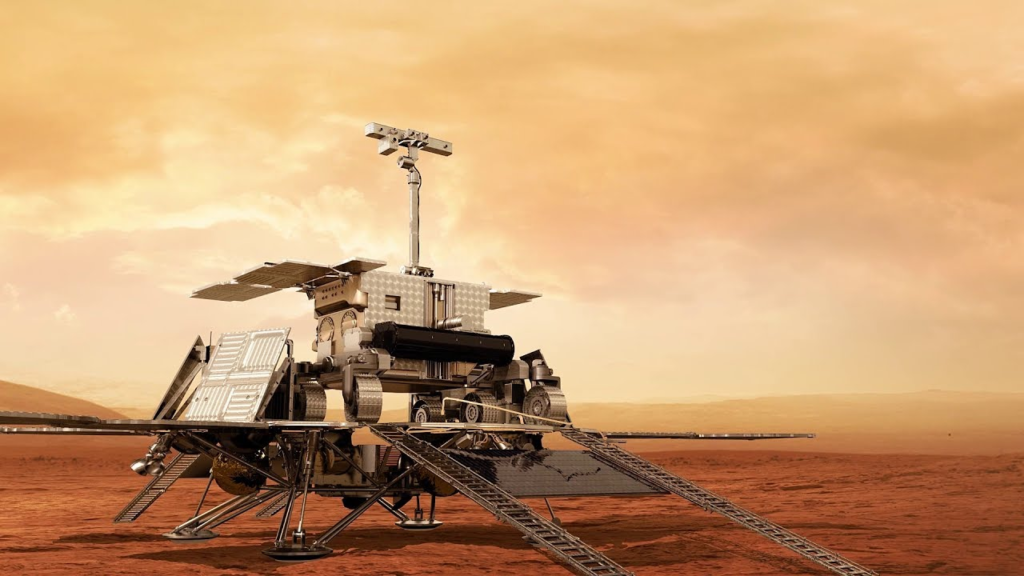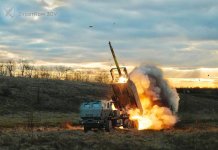Russia will commence work on its own Mars mission following the indefinite suspension of a joint project by the European Space Agency (ESA) in the aftermath of the Ukraine invasion, Interfax news agency quoted a top official as saying on March 18.
The ESA announced on March 17 that it would be impossible to continue cooperating with Russia on the ExoMars mission which was scheduled for launch this year.
ESA’s Director General Josef Aschbacher, while speaking at a media conference, called the September launch not only “practically impossible but also politically impossible”, given Russia’s invasion of Ukraine.
“In the very near future we will start working on the implementation of a mission to Mars,” said Dmitry Rogozin, head of Roscosmos, Russia’s space agency.
ExosMars is a two-stage program aimed at finding signs of life and investigating the presence of water and traces of gases with their sources, thereby demonstrating the technologies for a future Mars sample-return mission.

The first stage involved the launch of an orbiter and a lander in 2016 which was a partial success; the orbiter entered the Mars orbit as planned but the lander crash-landed due to a software bug that disrupted the landing sequence.
While the second stage of the mission was initially planned for July 2020, it was postponed because of problems with the parachutes that could not be resolved in time for the launch window.
The second stage would have involved the Russian-made ‘Kazachok’ lander delivering the ‘Rosalind Franklin’ rover on the Martian surface. The lander was to have launched on a Russian Proton-M rocket from the Baikonur launch site in Kazakhstan in September and had been scheduled to land on the red planet some nine months later.
Important Landing Site
The mission was to explore the Oxia Planum region of Mars, a 3.9 billion years old clay-rich area surrounded by ancient valley systems which strongly suggests the presence of water in the past. Notably, Oxia Planum was also a potential landing site for NASA’s Perseverance rover.
Now, with the cooperation called off by the ESA, Rogozin thinks that a rover would not be needed since Russia’s existing landing module would be able to carry out the required scientific work.
“Yes, we’ll lose several years, but we’ll copy our landing module, provide it with an Angara launch vehicle, and we will carry out this research expedition from the new launch site of the Vostochny Cosmodrome independently,” Rogozin said.
Once on Mars, the Kazachok lander would deliver the rover via ramps and remain stationary to photograph and study changes in the immediate surroundings for at least one Earth year.

The ‘Kazachock’ lander has thirteen instruments onboard, out of which eleven have been contributed by Russia. It is supposed to analyze the atmosphere and measure the amount of water vapor in it with the help of three spectrometers onboard. Furthermore, it has a magnetometer to measure local magnetic fields and a seismometer to study the planet’s internal structure.
The lander can also monitor seasonal changes in the dust environment, and air and soil temperatures; look for underground water, and monitor radiation levels.
Rogozin expressed doubts about what the ESA could do without Russia, which already had a rocket, a launch site, and the landing module. According to him, it would take at least six years for the ESA to develop its own module.
The six-wheeled Rosalind rover is designed to travel long distances over the Martian surface and has a total of nine components developed by scientists from several European countries.
The rover is supposed to navigate Martian terrain to identify the rocks of greatest interest with the help of two UK-made panoramic stereo cameras and a high-resolution imager onboard. It is designed in such a way that it can pick up the rocks so that they can be brought back to Earth for a deeper analysis than is possible on Mars with remote laboratory tools.
The rover also has a 2-meter (about 6.6 feet) drill to collect deeper samples than any previous Mars mission and ground-penetrating radar to let scientists see up to 3 meters (about 9.8 feet) underground.
Russian-Made Instruments
Russian scientists have contributed two components to the rover for investigating water presence; an infrared spectrometer for identifying rocks altered by water in Mars’ past and water-bearing minerals on them; and a neutron spectrometer for detecting hydrogen — an indirect sign of water — to locate promising underground water-rich deposits.
In addition to that, the rover also includes Russian-made radioisotope heaters that are essential to keep it warm at night on the surface of Mars.
The #ProtonM launch vehicle and #BrizM upper stage originally intended to launch #ExoMars rover to Mars will be delivered to Baikonur as planned, informed Roscosmos. They will be used to launch another payload. https://t.co/3sB4E1z0ZH pic.twitter.com/zMwNINmIcG
— Katya Pavlushchenko (@katlinegrey) March 18, 2022
David Parker, ESA’s Director of Human and Robotic Exploration, suggested future cooperation with Russia was not off the table. He said that if the collaboration was resumed, a mission could potentially launch in 2024.
Conversely, if Europe continues without Russia, it will have to reconfigure the mission. “Radical reconfigurations” of the mission that wouldn’t involve cooperation with Russia could potentially allow for a launch in 2026 or 2028, said Parker.
- Written by Tanmay Kadam/EurAsian Times Desk
- Contact the author at etdesk@eurasiantimes.com
- Follow EurAsian Times on Google News




